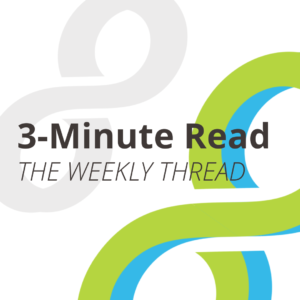Researcher Guidebook: Aligning Expectations for U-I Collaborations
March 19, 2024 —When researchers in universities and companies team up, magic can happen. Each player brings different strengths, resources, and motivations to the project, and ensuring these expectations are aligned from the start helps guarantee that everyone is on the same page and can work efficiently toward a win-win situation. Understanding each other’s points of view and priorities lays the groundwork for setting goals that play to everyone’s strengths.
—When researchers in universities and companies team up, magic can happen. Each player brings different strengths, resources, and motivations to the project, and ensuring these expectations are aligned from the start helps guarantee that everyone is on the same page and can work efficiently toward a win-win situation. Understanding each other’s points of view and priorities lays the groundwork for setting goals that play to everyone’s strengths.
The university perspective
Broadly, universities are focused on education, knowledge creation, and outreach. But research is also a high priority, and collaborative projects can be a vehicle for achieving these goals. According to a report from Elsevier, 89% of university leaders consider research a high priority, and 69% believe if the challenges they face are not addressed, it will have a severe impact on future research. More university leaders put a high priority on research excellence (93%) over educational excellence (82%), but only 56% felt well-prepared to meet the challenge of ensuring research excellence at their institutions.
Cross-sector partnerships for research can help universities meet their research excellence goals while providing unique benefits to other aspects of the institution; they can help to diversify sources of research funding and provide unique learning opportunities to students. When looking to engage in university-industry partnerships, academic researchers should know their institution’s policies and procedures, especially surrounding intellectual property (IP), publication rights, and any offices or personnel involved in the collaboration process.
With preparation as a foundation and familiarity with institutional policy, academic researchers can evaluate research partnerships through a lens specific to the partnering organization. If the partner has participated in other U-I collaborations, they will likely be familiar with some of the terms and conditions required by universities. If it is one of their first partnerships, they may be unfamiliar with the processes associated with research partnerships and may require additional support. Previous collaborations between the institution and the company can help to inform any current collaborations, especially if a master agreement is in place. It is also important to consider project-specific expectations surrounding deliverables, dissemination, IP, and other outcomes that may vary from project to project.
The industry perspective
For companies and industry partners, research collaborations should satisfy their missions to create value for investors, provide goods and services, and develop new technologies. While a company may be interested in fundamental science, it is more likely that partnerships can help solve a problem or address an issue specific to its business needs. Like their academic counterparts, corporate researchers should know any company policies and procedures established for research partnerships. This can include contract templates, confidentiality agreements, or other research partnership documents. Additionally, companies must ensure that research partnerships produce a return on investment (ROI). When looking to partner with universities, assessing the project’s ROI is critical to ensure shareholder support and alignment with company priorities. Research projects must also adhere to budgets and timelines established by the company, which impacts ROI.
Overall strategies
Often, research organizations feature a centralized unit or office dedicated to navigating legal and IP policy, which can help to align expectations on those more technical fronts. It’s also smart to start with the end in mind; parties should approach partnerships with project outcomes in focus and consider potential partners in terms of needs and skillsets and the type of project itself.
Overall, effective communication is critical for determining mutually acceptable expectations for research partnerships. Both industry and academic researchers should open lines of communication with internal stakeholders and their counterparts at the partner organization. Fostering dialogue about resources, capabilities, deliverables, timelines, and other aspects will help to ensure that goals for the project are well aligned. These conversations will also help highlight any concerns that can be proactively addressed before the project begins.
Why it matters
Misaligned expectations can scuttle a project before research ever starts. For university-industry research partnerships, ensuring that expectations are reasonable and well-aligned is vital for the success of the collaboration. Clear communication and a deep understanding of organizational policies and procedures ensure that projects run smoothly, paving the way for groundbreaking discoveries and benefits for everyone.
We want to hear from you. How do you keep expectations aligned in your collaborations? Let us know on our LinkedIn profile.
This 3-Minute Read is part of a series based on the Researcher Guidebook, a public resource published by UIDP. Our members have access to a sequential learning path and Quick Guide developed to help researchers tap into our collective knowledge and clearly understand their pivotal role in cross-sector research partnerships.


